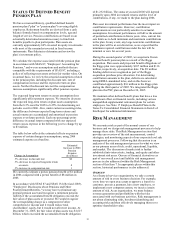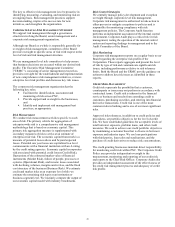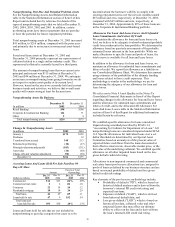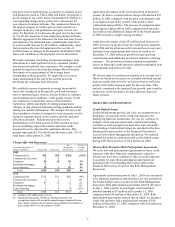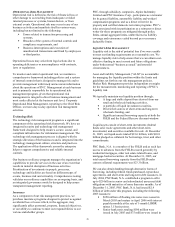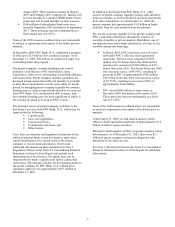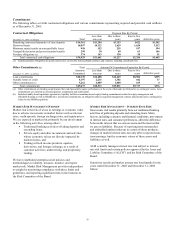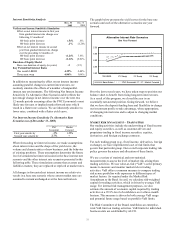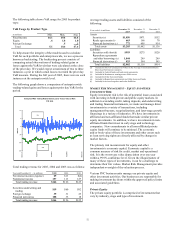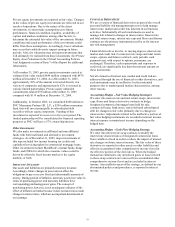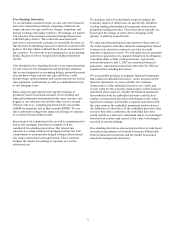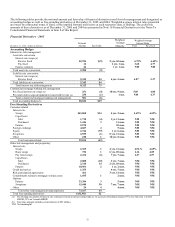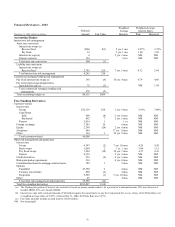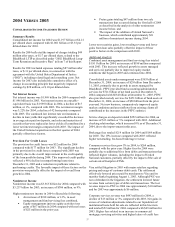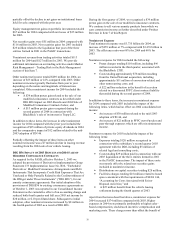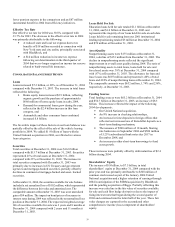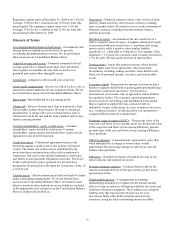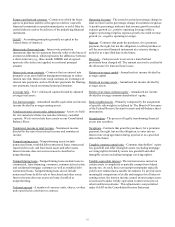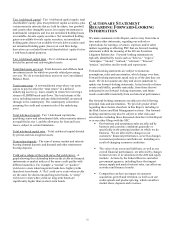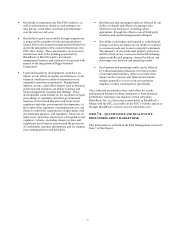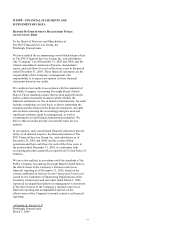PNC Bank 2005 Annual Report Download - page 54
Download and view the complete annual report
Please find page 54 of the 2005 PNC Bank annual report below. You can navigate through the pages in the report by either clicking on the pages listed below, or by using the keyword search tool below to find specific information within the annual report. 54
Free-Standing Derivatives
To accommodate customer needs, we also enter into financial
derivative transactions primarily consisting of interest rate
swaps, interest rate caps and floors, futures, swaptions, and
foreign exchange and equity contracts. We manage our market
risk exposure from customer positions through transactions
with third-party dealers. The credit risk associated with
derivatives executed with customers is essentially the same as
that involved in extending loans and is subject to normal credit
policies. We may obtain collateral based on our assessment of
the customer. For derivatives not designated as an accounting
hedge, the gain or loss is recognized in trading noninterest
income.
Also included in free-standing derivatives are transactions that
we enter into for risk management and proprietary purposes
that are not designated as accounting hedges, primarily interest
rate and basis swaps, interest rate caps and floors, credit
default swaps, option contracts and certain interest rate-locked
loan origination commitments as well as commitments to buy
or sell mortgage loans.
Basis swaps are agreements involving the exchange of
payments, based on notional amounts, of two floating rate
financial instruments denominated in the same currency, one
pegged to one reference rate and the other tied to a second
reference rate (e.g., swapping payments tied to one-month
LIBOR for payments tied to three-month LIBOR). We use
these contracts to mitigate the impact on earnings of exposure
to a certain referenced interest rate.
Interest rate-lock commitments for, as well as commitments to
buy or sell, mortgage loans that we intend to sell are
considered free-standing derivatives. Our interest rate
exposure on certain commercial mortgage interest rate lock
commitments is economically hedged with pay-fixed interest
rate swaps and forward sales agreements. These contracts
mitigate the impact on earnings of exposure to a certain
referenced rate.
We purchase and sell credit default swaps to mitigate the
economic impact of credit losses on specifically identified
existing lending relationships or to generate revenue from
proprietary trading activities. These derivatives typically are
based upon the change in value, due to changing credit
spreads, of publicly-issued bonds.
We enter into risk participation agreements to share some of
the credit exposure with other financial counterparties related
to interest rate derivative contracts or to take on credit
exposure to generate revenue. We will make/receive payments
under these guarantees if a customer defaults on its obligation
to perform under certain credit agreements. Agreements
entered into prior to July 1, 2003 are considered financial
guarantees. Agreements entered into after June 30, 2003 are
considered free-standing derivatives.
We occasionally purchase or originate financial instruments
that contain an embedded derivative. At the inception of the
financial instrument, we assess whether the economic
characteristics of the embedded derivative are clearly and
closely related to the economic characteristics of the financial
instrument (host contract), whether the financial instrument
that embodies both the embedded derivative and the host
contract is measured at fair value with changes in fair value
reported in earnings, and whether a separate instrument with
the same terms as the embedded instrument would not meet
the definition of a derivative. If the embedded derivative does
not meet these three conditions, the embedded derivative
would qualify as a derivative instrument and be recorded apart
from the host contract and carried at fair value with changes
recorded in current earnings.
Free-standing derivatives also include positions we take based
on market expectations or to benefit from price differentials
between financial instruments and the market based upon
stated risk management objectives.


